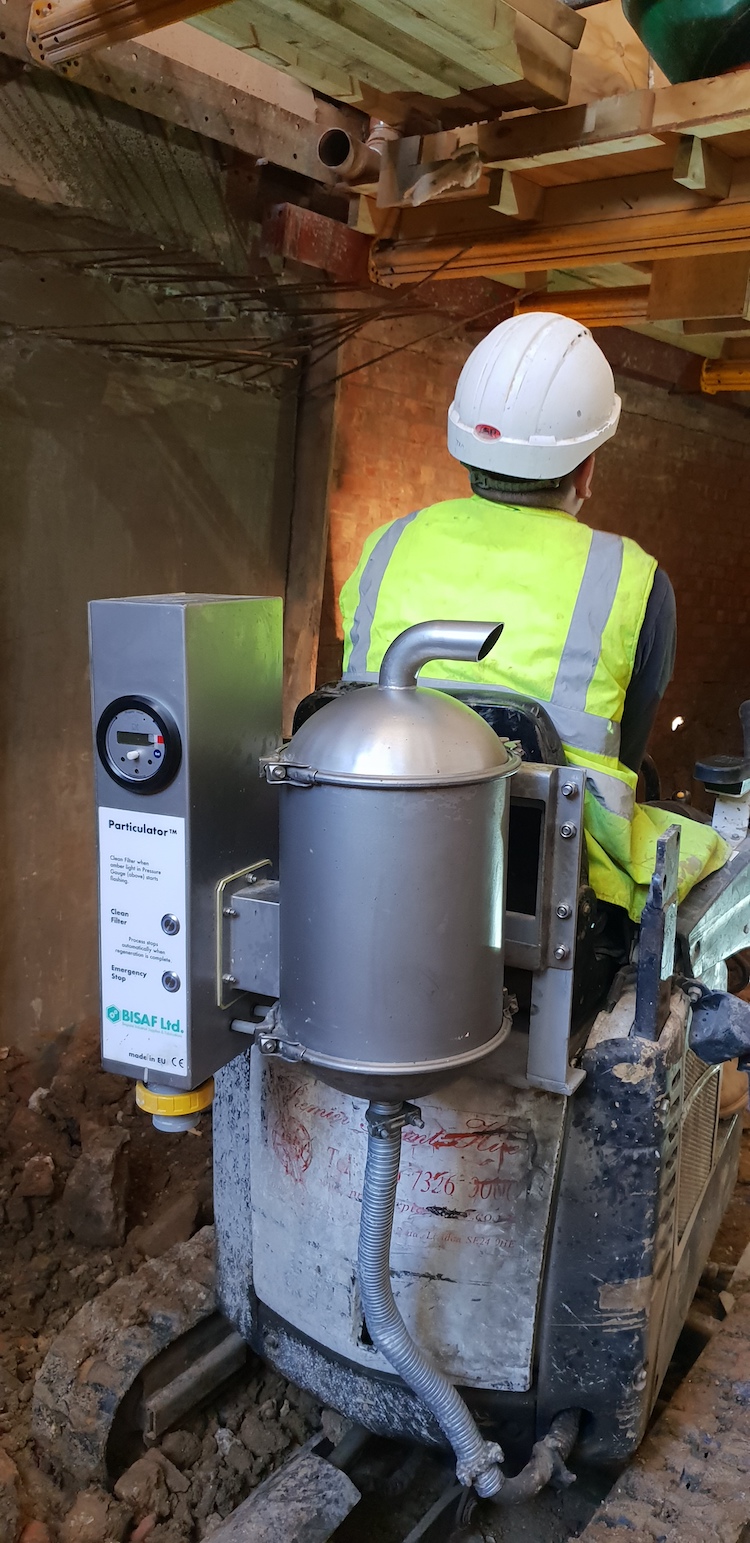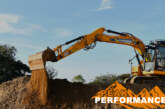
The Particulator is a retrofit device designed to eliminate dangerous emissions from small machinery. Construction Plant News Editor, Lee Jones finds out more.
Our Capital has been a ‘cellars’ market for some time, with often quite substantial excavations making basement work big business. Rental firms like Premier Plant Hire have been supplying the likes of conveyors and props for contractors going underground, and in the process accrued valuable insight into the particular demands of the sector. The quickest way to dig out that potentially lucrative additional space beneath a property is, of course, with machinery, but there is an obvious pollution problem with using diesel powered equipment in such confined spaces.
Managing Director, Paul Kuebler had already set up a sister company, BISAF which, since its inception in 2006, been dedicated to improving air quality and worker safety. The company is now well established as the sole agent for the Johnson Matthey range of retrofit emissions aftertreatment solutions, a manufacturer with over 25 years of experience in the field and more than 25,000 units sold.
When Premier Plant Hire’s own customers raised the issue of using compact plant in enclosed sites, Paul would take the bold decision to produce a solution specific to those jobs. Richard O’Sullivan, BISAF Technical Director, was instrumental in the development of the Particulator and explains its development. “The existing Johnson & Matthey range services the requirements of larger machines, and in particular the 37kW and above units that are required to meet the demands of Non-road Mobile Machinery (NRMM) low emissions zones, but what we wanted was a remedy for the problem of particulate matter emissions in machines of 25kW or lower. It is these 3 ½ tonne and below units that will be used on below ground works, and which previously didn’t have access to the kind of retrofit diesel particulate filter (DPF) systems that are available to their bigger siblings.”
 The answer is the BISAF Particulator®, which makes use of the kind of mature technology which is already recognised in the industry as an effective particulate matter mitigation measure, with its ceramic wall-flow filter now routinely utilised by automotive manufacturers. “Essentially it works by filtering the exhaust fumes,” continues Richard. “The soot that builds up on the filter is subsequently burnt off by electrical heating, usually once a day. As a result, up to 99.9 per cent of harmful particulate emissions that would have exited from the machine’s tailpipe are safely removed. Our task was to scale down the technology to smaller plant and make it is as efficient and user friendly as possible.”
The answer is the BISAF Particulator®, which makes use of the kind of mature technology which is already recognised in the industry as an effective particulate matter mitigation measure, with its ceramic wall-flow filter now routinely utilised by automotive manufacturers. “Essentially it works by filtering the exhaust fumes,” continues Richard. “The soot that builds up on the filter is subsequently burnt off by electrical heating, usually once a day. As a result, up to 99.9 per cent of harmful particulate emissions that would have exited from the machine’s tailpipe are safely removed. Our task was to scale down the technology to smaller plant and make it is as efficient and user friendly as possible.”
As a result, initiating that regeneration cycle is as simple as connecting to a power supply and pressing a button, with the filter then cleaned in around 30 minutes. “In order to ensure reliability, we’ve also developed a certain amount of electronics that are unique to the Particulator,” enthuses Richard. “The condition of the filter is checked via a sensor that monitors back-pressure on the engine, for example. The operator is then informed on the display via green, amber and red lights as to its status. Green and you’re good to go but if amber is on that’s your cue to clean.”
Given that it is destined for the hire market, the guiding principles of the Particulator have been simplicity and versatility, and that includes installation and removal. In order to make use of this retrofit product, a simple frame is fitted onto the excavator, with the Particulator then bolted to that frame, in what should be no more than a ten-minute job. Once the exhaust pipe is connected to the unit via a flexible hose, the workforce can start to enjoy the prospect of cleaner and safer air. When a machine is being delivered to a job that is deemed higher risk – such as a tunnel or basement, or around a school or hospital – the Particulator can be easily attached, but just as easily removed when required.
Concludes Richard: “Particulate matter is a serious occupational health issue and one that the Health & Safety Executive (HSE) takes very seriously. Employers do have a duty of care towards those on their payroll, and exposure to particulate matter can introduce carcinogenic hydrocarbons into the lungs and bloodstream. On small machines, the Particulator as good as eradicates those emissions entirely.”
Given that the regulations on the most compact pieces of plant are far less stringent than the bigger beasts in the sector, this is a development that could potentially pitch to a very wide audience. Even Stage V machines below 19kW are not currently required to be fitted with diesel particulate filters, for instance, which means that they can emit up to 27 times the amount of particulate matter per kilowatt than their 19kW plus counterparts. That makes the Particulator a very useful tool for contractors in successfully discharging their health and safety responsibilities.








